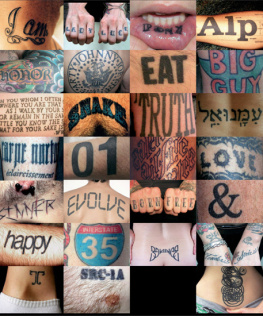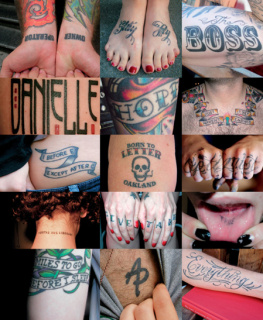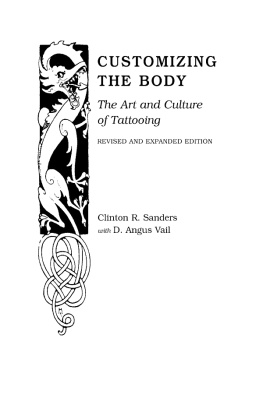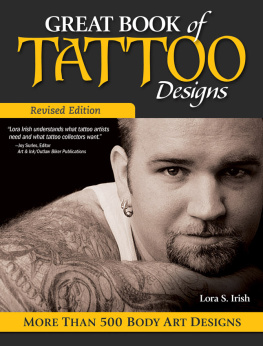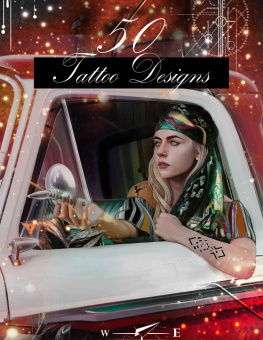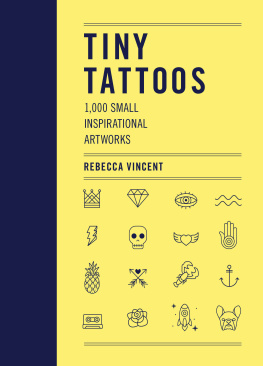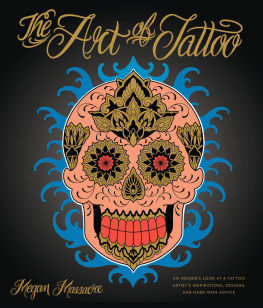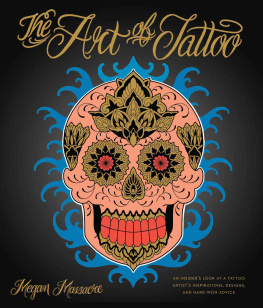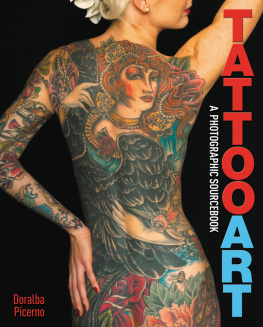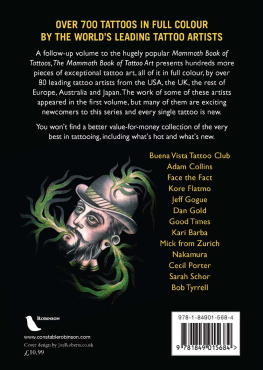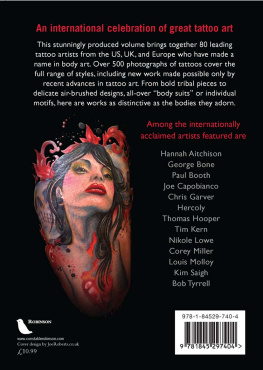




Editor: Tamar Brazis
Designer: Ina Saltz
Production Manager: Kaija Markoe
Library of Congress Cataloging-in-Publication Data:
Saltz, Ina.
Body type : intimate messages etched in flesh / Ina Saltz.
p. cm.
ISBN: 978-0-8109-7050-2
1. Tattooing. 2. Words in art. I. Title.
GT2345.S25 2006
391.65dc22
2006013339
Text copyright 2006 Ina Saltz
Cover photographs 2006 Ina Saltz
I am, Snake, and Sinner courtesy of Karjean Levine.
Air, Fire courtesy of Stephanie Tamez.
Evolve courtesy of Nicole Dallis.
Balance courtesy of Bruce Barone.
Please see for interior illustration credits.
Published in 2006 by Abrams Image, an imprint of ABRAMS. All rights reserved.
No portion of this book may be reproduced, stored in a retrieval system, or transmitted in any form or by any means, mechanical, electronic, photocopying, recording, or otherwise, without written permission from the publisher.
Abrams Image books are available at special discounts when purchased in quantity for premiums and promotions as well as fundraising or educational use. Special editions can also be created to specification. For details, contact specialsales@abramsbooks.com or the address below.

115 West 18th Street
New York, NY 10011
www.abramsbooks.com
Dedicated to my parents, Irving and Josephine, who would have been so proud

I got the 01 as a sort of digital yin yangthe basics of binary computer language, which all instructions are built around (in actuality, they are built around a series of negative and positive voltages, but are represented as 0s and 1s in binary). I associated this with the delicate relationship of opposites which are illustrated through Taosim and are the basis of just about everything in the universe, according to Taoist thought.
CONTENTS
FOREWORD
IT BEGAN WITH A TRIP ACROSS TOWN on the bus, where I spotted an interesting-looking young man with an even more interesting and quite large tattoo on his right forearm; it spelled out happy in a typeface which I instantly recognized as Helvetica. The fact that it was in lower case and so tightly kerned that the letters were touching was especially intriguing to me as a designer and a typophile. I had never seen a tattoo quite like this onesans serif! Not being in the habit of talking to strangers in New York City, I debated mightily before approaching him but my curiosity finally got the better of me.
Are you a graphic designer? I asked. Why, yes, he was. And would you mind if I took a photo of your tattoo to show my students? I teach typography at City College. No problem. I whipped out my digital camera and managed to get one shot and grab his proffered business card before I missed my stop.
That evening I uploaded the photo and went to the Web site on his business card to send the image with a proper thank-you message. Imagine my astonishment to find our entire conversation recounted on his blog!
As often happens when encountering something new, having seen one typographic tattoo, I now started to see them everywhere (it was August and a lot of skin was visible). Always searching for the next topic for my column in STEP Inside Design magazine, I seized upon the notion of documenting this new style of tattoo: unadorned words rather than images. Fortuitously, not far away, a huge tattoo convention was happening that very weekend. I called my editor, who arranged for a press pass.
The circuslike atmosphere of the tattoo convention was an eye-opening experience a hundred or more people being simultaneously tattooed; electric needles buzzing, drowned out by blaring rock music; tattoo competitions on the big stage; and a very eclectic crowd. I had no trouble finding examples of typographic tattoos for my article; in fact, I started to realize that this typographic tattoo thing was pretty widespread.
As I began to attend other tattoo conventions and follow the tattoo subculture, I noticed certain patterns. Most of the people I photographed were young, had gotten their tattoos recently, were educated in or already practicing in the creative arts, and were quite well-informed about their choice of typestyle. The texts of the tattoos were not at all what I expected; there were literary passages, poetryeven Shakespeare and Dante.
It became clear that the people who were getting these typographic tattoos were quite different from those who were traditionally associated with tattooing. I was surprised to find that no one had yet documented this trend. Having a lifelong passion for and involvement in the design and use of letterforms, I thought that a lengthy exploration of this phenomenon would be a worthy undertaking.
The journey of photographing, researching, and writing Body Type changed me in ways I could not have predicted. To begin with, I developed a third eye that spotted typographic tattoos all over town. Second, if I saw any evidence of a tattoo, or I thought someone just might have one, I no longer hesitated to approach them: I became quite brazen! Almost all were eager to show me their tattoos, and lost no time in exposing body parts to give me a close-up look (however inappropriate that might have been at the moment).
Wherever I went (to a party, to the beach, to an opening, or some other professional event), I discovered a typographic tattoo or someone who knew someone who had one. Two nationwide reality television series about tattoos debuted almost simultaneously; new upscale tattoo Web sites proliferated, and a glossy and luxe tattoo magazine, Inked, packed with mainstream advertising, launched its premiere issue. Suddenly, there appeared to be a hyperactive public and media awareness of the tattoo world.
Although I had initially planned to write about the history and appropriateness of the letterforms used to convey a particular message (which is why I chose to include only Latin letterforms), I found myself drawn to the stories behind the tattoos, the individual and unique motivations for making a permanent commitment. (In the tattoo world, a tattoo is referred to as a commitment; the larger the tattoo, the more serious the commitment.) The stories dictated the structure of the book, divided by the themes of the tattoos: love and self-love, religion and politics, homage, celebration or exorcism, memorialization, exhortation, and remembrance. (In some cases, the tattoos fit into more than one category, but I have tried to honor the dominant intention of the wearer.)
As I interviewed my subjects, I discovered that their reasons for getting tattooed ranged from whimsical and impulsive to profound and deeply considered. Some tattoos were motivated by personal tragedy, others by joy. Whether tattoos were obtained to excise personal demons or to mark a rite of passage, these personal revelations fascinated me, and so the book became a different journey than the one I expected.
Next page
